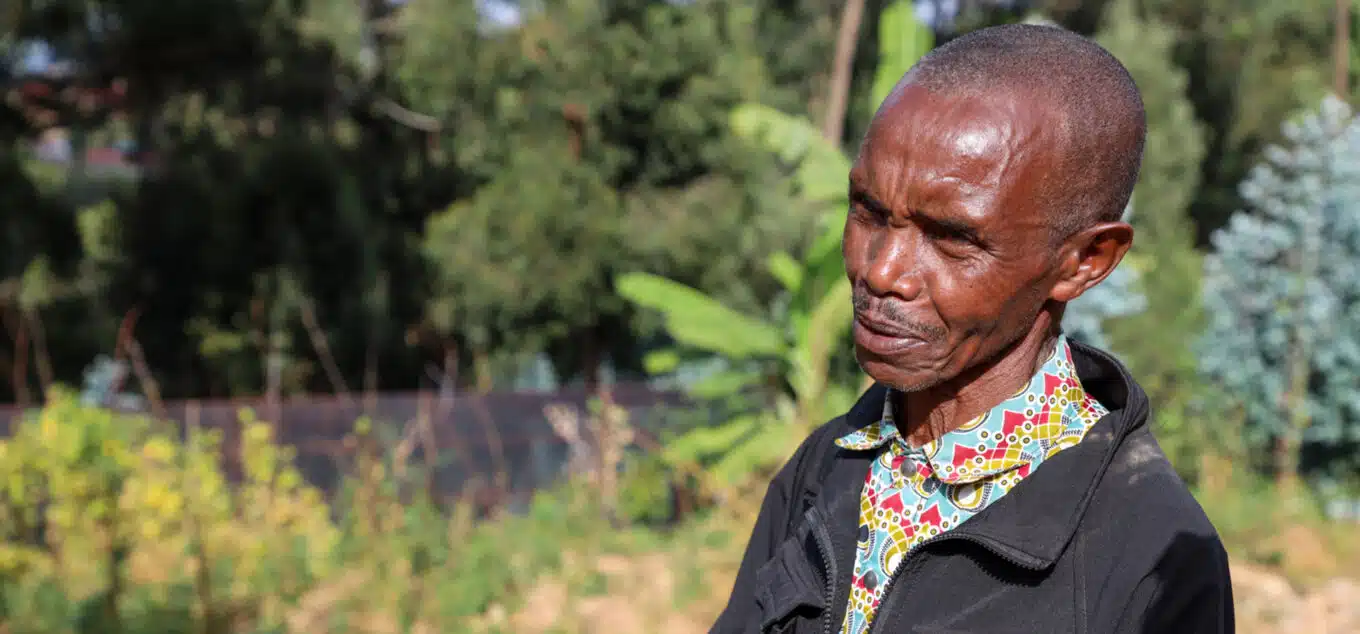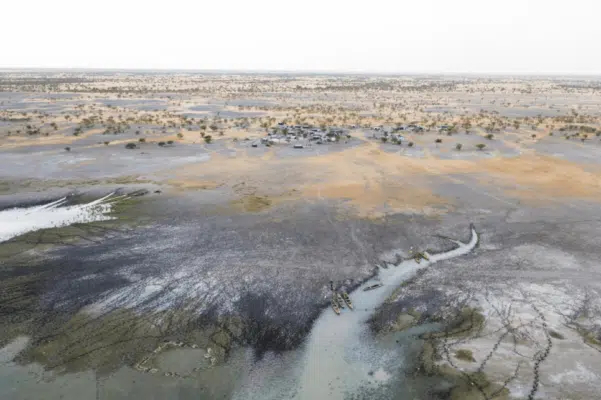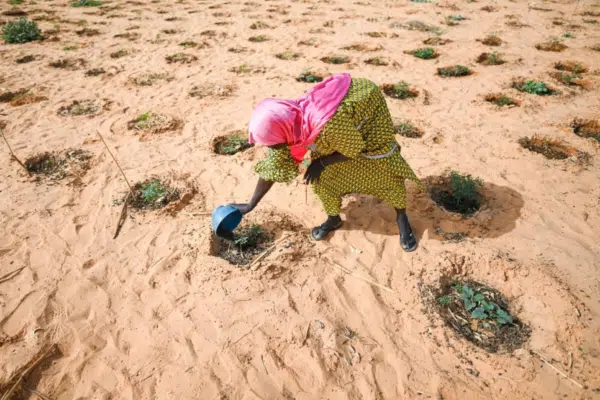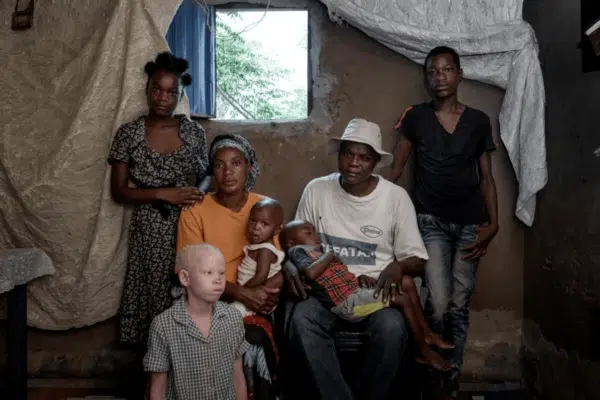
Eugene Rurangwa Gituku, a Congolese refugee living in Rwanda’s Kigeme camp, stands in the tree nursery where he and his group grow seedlings to plant in the camp and surrounding areas. © UNHCR/Lilly Carlisle
Congolese refugees in Kigeme camp are working with Rwandans to plant trees to protect the soil and participate in environmental rehabilitation efforts
By Eric Didier Karinganire in Kigeme, Rwanda
On a sunny afternoon, Eugene Rurangwa Gituku, a Congolese refugee living in Kigeme camp, waters seedlings in a tree nursery as his colleagues carry out a regular assessment of the seedlings’ growth.
The 65-year-old refugee is confident these trees will improve air quality in the camp and, most importantly, bind the soil with their roots in an area that is threatened by high rates of erosion and landslides.
“There is a big difference now when it rains since we started planting trees,” he says. “Before the soil was very weak and it would just wash away, but the tree roots keep the soil together.
“When we lived in the Congo, we had a lot of forests, so now it feels like home, and we can sit in the shade of the trees when it is too hot,” he adds.
“Now it feels like home.”
Situated on two adjacent hills in the southern part of Rwanda, Kigeme refugee camp has been hosting over 14,000 Congolese refugees since 2012. But a drainage channel combined with increasingly heavy rains linked to climate change contributed to the formation of two large ravines between the hills on either side of the camp.
“There were many consequences, children would fall into the ravine,” explains Edson Munyakarambi Sebutozi, a 54-year-old Congolese refugee and the camp president. “Families that used to live here have been scattered, some of them relocated to Mahama [another refugee camp, 250 kilometres away].”
He added that having to relocate was a major setback for refugees who relied on businesses they ran in the camp to supplement their aid rations.
The ravines have also resulted in injuries.
Apollinaire Uwimana, 47, was digging terraces near the ravine one day when a small landslide swept him into tit. His arms and neck were seriously injured, and he had to stay in hospital for six months.
“I used to work and support my family, but with this disability, I can’t do anything,” Apollinaire says.
Rather than accept the situation, Eugene, Edson, and other refugees decided to tackle the issue head-on. Together with Rwandans living near the camp, they received training on environmental protection from UNHCR, the UN Refugee Agency, and World Vision, an international NGO. They learned that planting trees would counter the ravine’s expansion and protect the soil and the environment around them.
Since 2019, when a group comprising of 14 refugees and six Rwandans started growing tree seedlings, they have planted over 37,000 trees in the camp and 26,000 in the host community. Varieties include eucalyptus, alnus, and fruit trees.
“There used to be bare hills here, then we found solutions together with our hosts,” explains Edson.
The tree planting has slowed down the growth of the ravines while relocations and community awareness sessions have reduced the number of injuries related to them.
These environmental activities are helping to fulfil a pledge made by the Government of Rwanda at the Global Refugee Forum in 2019 to reduce any adverse impacts on the environment in refugee-hosting areas and to build resilient refugee settlements. The government will soon begin work to construct terraces and retaining walls at the ravine sites.
In addition to protecting the environment, the project has also allowed participating refugees to plan for the future by providing them with a regular income in the form of stipends paid by UNHCR and World Vision.
“[It] enabled us to save some money and stopped us from staying home. We are also learning about entrepreneurship because we acquired some skills on how to prepare tree nurseries. We are planning to start producing flowers to expand our market,” Edson adds.
“We have become friends.”
As the camp inhabitants and their Rwandan hosts work together to rejuvenate the environment in the area, social cohesion between the two populations has also improved significantly.
“Living in a high-risk zone is difficult both for refugees and Rwandans, so this project is beneficial for us both. Through tackling climate change with my brothers living in the camp, we have become friends,” comments Obed Tuyizere, 24, one of the Rwandan members of the environmental group.
Their sense of unity and shared responsibility continues to grow as they participate in environmental rehabilitation efforts and educate their communities about the importance of water conservation and recycling. The camp and neighbouring areas have become places where trees thrive, and residents find solace in the shade they provide.
Originally published by UNHCR on 4 September 2023.





